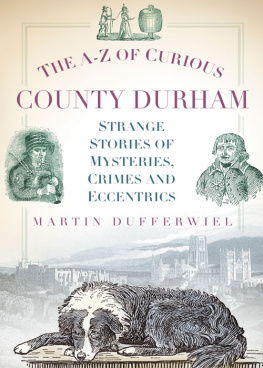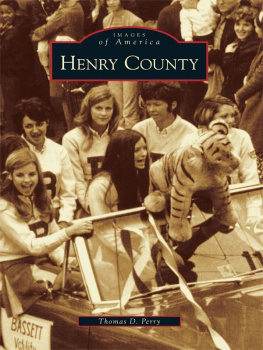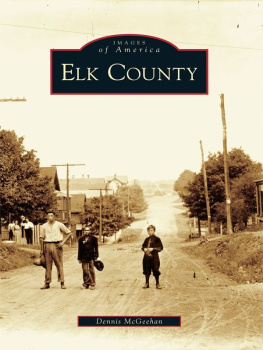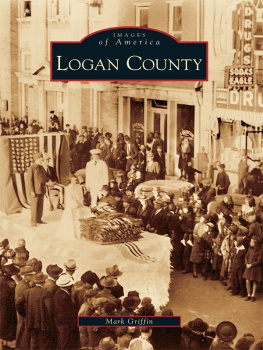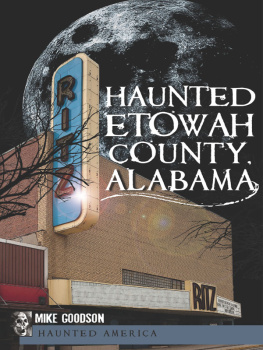Published by The History Press
Charleston, SC
www.historypress.com
Copyright 2019 by Jennifer Rogers
All rights reserved
Unless otherwise noted, images are from the authors collection.
First published 2019
E-Book edition 2019
ISBN 978.1.43966.613.5
Library of Congress Control Number: 2018960969
Print edition ISBN 978.1.46713.870.3
Notice: The information in this book is true and complete to the best of our knowledge. It is offered without guarantee on the part of the author or The History Press. The author and The History Press disclaim all liability in connection with the use of this book.
All rights reserved. No part of this book may be reproduced or transmitted in any form whatsoever without prior written permission from the publisher except in the case of brief quotations embodied in critical articles and reviews.
DEDICATION
This book is dedicated to Dr. James Adams, a man of great wisdom, integrity and knowledge. While I was obtaining my Bachelor of Arts in American Studies at Pennsylvania State University, Dr. Adams taught six of my history courses, all the while guiding me in understanding how truly amazing history is and why it should continue to be appreciated. When Dr. Adams passed away just a year after my graduation, I, along with many of his students and colleagues, was devastated. Thank you, Dr. Adams, for making history fun, enjoyable and incredibly fascinating. I will carry your love of history with me for life.
FOREWORD
Jennifer Rogers is uniquely qualified to write about the unknown aspects of Bucks County, one of Pennsylvanias most storied counties. Ms. Rogers is a skilled historic researcher who has a keen sense of what makes a fascinating story when she encounters a fragment of a diary, an enticing picture or an almost-forgotten historic inn. While she was still my student in American Studies at Penn State Universitys Abington College and interning at Doylestowns Mercer Museum, Rogers stumbled on an unpublished diary, handwritten in a sometimes hard-to-read faded scrawl. Intrigued, she discovered it was a firsthand account by an enlisted Civil War soldier, Private Joseph Lehman Eisenbrey, from Lumberville, Bucks County. Getting permission from the museum to transcribe the diary, Rogers spent the better part of a year following the exploits of the soldier from boot camp in Philadelphia to the end of the war at Appomattox. Captivated by his story, she extended her research into the rest of Eisenbreys life as he became a prominent dentist in Chestnut Hill, taking photos of his former residence. Rogerss work culminated in a paper analyzing the context of Eisenbreys part in the Civil War that was accepted for the Pennsylvania History annual conference. Rogerss persistence and skill in original research is noteworthy.
Jennifer Rogerss career after graduation from Penn State has enhanced her skills as a historic researcher, as she worked as the collections manager and also as preservation associate at the SS United States Conservancy and is pursuing a Master of Science degree in history at the University of Edinburgh, Scotland. Evidence of Rogerss continuing interest in Bucks County history is her appointment to the Upper Southampton Historical Advisory Board, in addition to the Craven Hall Historical Society Board of Directors.
Jennifer Rogers has a genuine passion for discovering the stories of Bucks Countys past, from the early days of the Lenni-Lenape Native Americans to the founding of Pennsylvania, to the Revolutionary War and forward to the more modern influences of Bucks County in art and theater. Hidden History of Bucks County should be a must read for all area history buffs.
DR. ELLEN ANDREWS KNODT
English and American Studies
Penn State UniversityAbington
ACKNOWLEDGEMENTS
Growing up in Bucks County, Pennsylvania, I was quickly immersed in the historical beauty hidden across the county, just northeast of the city of Philadelphia. Bounded by the Delaware Riveran influential piece of American history itselfBucks County, one of Pennsylvanias first three counties, was founded in 1682 by prominent Quaker, philosopher and entrepreneur William Penn. Originally encompassing what is now Northampton and Lehigh Counties until 1752, Bucks became home to many notable figures and celebrities, quite a few making it into history books.
My passion for history was not always the strongest. It wasnt until my sophomore year at Pennsylvania State University that I discovered this newfound love, all thanks to professors Dr. Ellen Knodt, as well as Dr. James Adams, may he rest in peace. My family, especially my parents, Ray and Cindy; brother, Brian; sister-in-law, Mary; and fianc, Tyler, has continued to support me through all of my historic endeavors, whether they believed I spread myself too thin or nottheir encouragement has meant so much to me.
Becoming so involved with local history, beginning with the time I spent at Mercer Museum as an intern during undergrad, as board member of the Upper Southampton Township Historical Advisory Board and the Craven Hall Historical Society and through my research I conducted as part of this book, I have gained valuable knowledge of Bucks Countys past. The plethora of history hidden within the still-standing stone walls, Victorian-era archways and Underground Railroad station stops is overwhelming, so much so that it is near impossible to include in just one book. Doesnt it just make you wonder how much is left to uncover? Please allow me to guide the way as you navigate through this book, hopefully leaving you walking away with a better sense of Buckss little known tales and stories.
Flourishing with an abundance of history dating back to the early 1600s, the original Bucks County residents have left quite an imprint on the structures and relics still existing today, and a huge thank-you goes out to the historians, librarians and curators and all those who share the same love for local history as I do. It has never been more important to preserve this countys history. As the construction of new buildings and homes continues, historic grounds and structures may sadly meet their tragic demise. It is up to us to save Bucks Countys history. Heres to you.
INTRODUCTION
THE FOUNDING OF BUCKS COUNTY
On August 31, 1682, William Penn (October 14, 1644July 30, 1718) embarked on a voyage from Deal, England, across the Atlantic Ocean on the ship Welcome alongside many of Bucks Countys future prominent figures. The Welcome was one of the twenty-two ships to cross the Atlantic bringing the first two thousand settlers to the Province of Pennsylvania between 1681 and 1682. Accompanied by one hundred immigrants, mostly Quaker Friends, Welcomes passengers suffered through a long, dreary passage, leaving thirty dead from a smallpox outbreak on board the vessel. Penn endeared himself to all on board, paying close attention to the sick and dying. The crossing lasted fifty-seven days, with the Welcome anchoring at Upland (Chester, Pennsylvania) on October 28, 1682. Approximately half of those who arrived with William Penn settled here, and some of their descendants are still found scattered across the county, bearing the same names to this day.
Nearly four months before William Penn arrived in America, Penns cousin William Markham made the first official purchase in Bucks County on July 15, 1682, using wampum, a few blankets, guns, beads and other miscellaneous goods to pay for the plot of land. In 1684, William Penn returned to England to manage his fathers estate in County Cork, Ireland, and participated in military action against Irish rebels. Penns father was granted the Macroom Castle estate, which had been originally owned by the MacCarthys. While it is unknown when Penn converted to Quakerism, the course of his life significantly changed when he heard a Quaker preacher teaching the ideals of the religion. During this same time, the English Crown refused to allow new religious groups to rise under its rule, in turn, outlawing every religion other than the Church of England. Because of this outlandish ruling, Penn composed tracts, letters and books to further fight for freedom of religion. Quakerism would soon benefit under Penns dedication to the religion through his remarkable talent and connections. William Penns involvement in the Quaker lifestyle would later assist in the development of East Jersey and West Jersey, two Quaker colonies that were established by England. In 1680, he approached King Charles II of England, requesting land in America that would ignite a new nation. By designing a colony and government that would reflect his own personal views, Penn would become the proprietor of Pennsylvania just a short year later. William Markham, an English surveyor and soon-to-be deputy governor of the province, was sent to map out the city of Philadelphia based on a grid pattern with squares of open space. Markham would later choose the site of Penns estate, now Pennsbury Manor in Morrisville, Bucks County, constructing his home in 1682.


